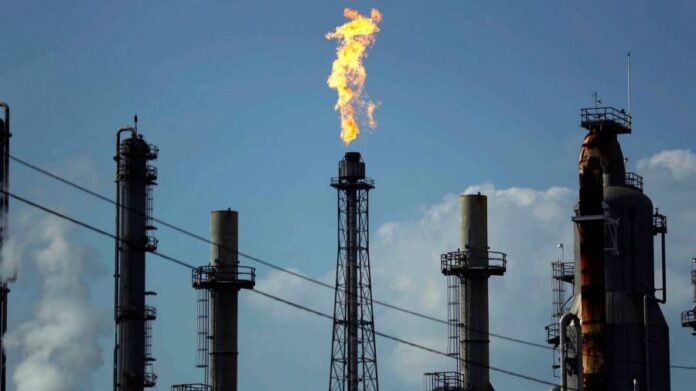DUBAI/LONDON: Gulf debt and equity markets fell on Tuesday and the Saudi currency dropped in the forward market, after US crude oil futures collapsed below $0 on a coronavirus-induced supply glut.
The plunging oil prices, combined with other economic pressures caused by the coronavirus outbreak, are hurting the budgets of Gulf countries that rely heavily on crude exports and their currencies are also under pressure.
“Despite the OPEC deal to cut over 10pc of global oil production, the price of oil keeps falling,” said Artur Baluszynski, head of research at investment management firm Henderson Rowe. “While yesterday’s negative WTI futures price might have been a one-off glitch, it does confirm there is trouble ahead.”
US crude oil futures (WTI) fell below $0 on Monday for the first time in history as demand cratered. Brent crude, the international benchmark, also slumped, though that contract was nowhere near as weak.
Mohammed Ali Yasin, chief strategy officer at Al Dhabi Capital in Abu Dhabi, said most of the market turmoil was sentiment-based.
“People are not understanding why this happened so fast … Is this (the price) at which governments have to sell oil? The answer is no, but it will take them some time to understand.”
The Saudi stock index .TASI dropped 1.5pc at the market open with oil company Aramco down 1.7pc.
Shares in the Dubai market DFMGI fell 1.4pc while the Abu Dhabi index ADI lost 0.5pc and the Kuwaiti premier index BKP declined 2pc.
The cost of insuring against a potential debt default by Saudi Arabia — the world’s biggest oil exporter — increased slightly, to 168 basis points from 166 on Monday, according to data from IHS Markit. It is up 13 bps in the past week.
Meanwhile US dollar-denominated bonds issued by Saudi Arabia, Oman, and Bahrain shed between 0.5 cents and 2 cents while Aramco’s paper due in 2049 was down almost 1 cent, according to Refinitiv data.
DOLLAR PEGS UNDER PRESSURE?
The Saudi riyal fell in the forward market against the dollar. It is pegged at 3.75 to the US currency in the spot market, so banks often use the forward market to hedge against risks.
Nine-month dollar/riyal forwards SAR9M= — trades scheduled to take place in nine months — went as high at 148 points, up from Friday’s close of 60 points — their highest level since November 2017. Refinitiv data showed them last at 110 points.
One-year forwards SAR1Y= rose to 210 points, flirting with a near 2-1/2 year high of 211 hit on Monday.
“The collapse in oil prices has led to renewed pressure on dollar pegs in the Gulf,” said Jason Tuvey, senior emerging markets economist at Capital Economics.
But besides the Saudi riyal, other currencies did not move much on Tuesday.
“People will get excited about and go long dollars but not because they think the pegs are really going to break but because there will be some others betting on it,” said Paul McNamara, investment director at GAM.
“It is one of those things that you might see until people become bored of it again.”



































